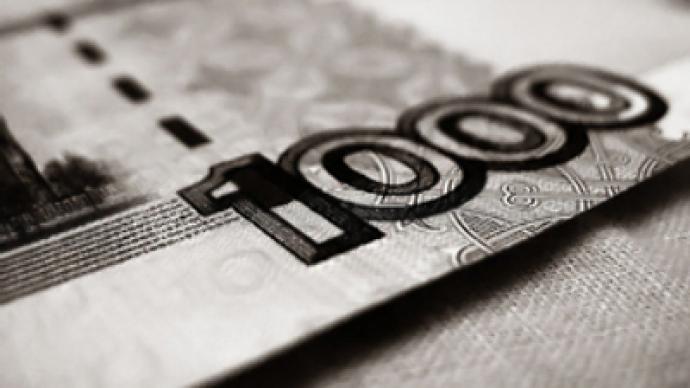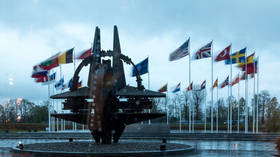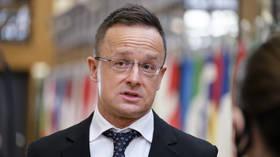Making the Rouble a new regional reserve

The push to make the Russian rouble a new regional reserve currency has picked up momentum with renewed calls by Russian President, Dmitry Medvedev, at the St Petersburg Forum and the BRIC meeting in Yekaterinburg.
The Russian President clearly outlined the focus of the Governments policy on making the Rouble more prominent during his comments at the 2009 St Petersburg Economic Forum, noting that the Rouble becoming a reserve currency would not come about through government edict, but rather it would come about through increased demand for the Russian currency amongst its own corporations and trading partners.
“We understand that neither of the reserve currencies could be made so virtually, it’s impossible to fix a national currency as a reserve one. That is why our aim, I mean the aim of the Russian Federation, is to make the Rouble exchange rate more attractive, a more handy and reliable means for settlements for our companies, our neighbours, for everybody who would like to use it in its settlements.”
First Deputy Prime Minister, Igor Shuvalov, also at the St Petersburg Economic Forum, noted that the first priority would be to encourage greater use of the Rouble amongst Russia’s neighbours, before pushing further.
“If we talk about the potential reality in the near future, the target area would be CIS countries. If it happens there, then there’s a chance for the Rouble to become a reserve currency in such countries as China, India, the Arab states as well, we have great potential.”
Most economists and analysts considering the question say the evolution of the Rouble into a regional reserve currency is a longer term plan of action, and not one which will happen in the short term, with a number of preconditions needing to be met before the Rouble becomes a regional reserve. Elina Rybakova, Chief economist at CitiGroup Russia, says that Reserve currencies are those which have an established track record where users of the currency can have greater certainty over potential likely future moves, and that ultimately the choice of a reserve currency reflects a market rather than political imperatives.
“What I really enjoy about the discussion about the reserve currencies is that it’s a true market – based discussion. It’s an open bazaar. You can imagine that you go to the market and you have to choose the currency you trust most. What do you choose? You choose which central bank is the most reliable, which Government will deliver you predictable low inflation and positive real interest rates and will do this consistently over the large number of years. For example, dollar hasn’t always dominated the global financial world: we’ve seen ups and downs of the dollar and then we’ve seen great disinflation brought by Volcker in the 70’s that brought down the US other countries to deliver credible good policies and I think you should always have that competition. Whether we will be able to switch from the US Dollar quickly, I don’t think so. I think it’s more a debate of maybe 2050 rather than 2015. ”
Inflation first
Chief Economist at Troika Dialog, Evgeny Gavrilenkov, says the most critical issue needing to be addressed is inflation. Currently running at about 13% per annum, Gavrilenkov says that this means the Russian currency is difficult to use in contract settlements, and that Russia not only needs to bring inflation down, but show that it can keep the inflation rate down over a longer period.
¨High inflation creates major difficulties for the Rouble to become a reserve currency. Unless the country has inflation at 2-3%, like in the majority of developed countries, its currency can’t become that popular. And it’s necessary not only to achieve the target but to maintain it for at least 5-7 years so that people in the country and abroad could be certain about the stability and predictability of the currency.¨
Increased economic stability
The need to bring inflation down and to hold it down, will largely reflect a greater degree of economic stability according to Elena Sharipova, Chief Economist at Renaissance Capital. She notes that greater economic stability is only likely to come about when the country has a more developed economy than Russia currently has – and less dependent on natural resources – coupled with more developed, and more globally integrated financial markets.
“I think economic stability is the key factor for the Rouble to become a reserve currency. Our economy is too dependent on natural resources, which particularly hinders the process. Developed financial markets is another point. If a country has its financial market open to as many countries as possible with transparent regulations that is equally understandable both for domestic population and foreigners, then it has all chances to become a Reserve currency.”
Sharipova adds that a key part of the increased stability needed will come from promoting greater confidence in the Rouble amongst Russians. She thinks this will need the government and the central bank to focus monetary policy more closely on monetary outcomes, rather than political outcomes, meaning greater transparency in decision making processes, more carefully articulated to the general public.
“Of course, people’s confidence in their currency is very important. To make people rely more on the Rouble, the whole Russia’s economy should become more stable and predictable. This means that first of all our Government should be honest with its citizens, giving them true facts. Talking about the present situation, I think, the Government should have conducted a more strict policy and been more precise in their actions instead of conducting a smooth Rouble devaluation, for example.”
More Roubles in circulation
A more diverse and stable economy, more closely integrated with global financial markets, could see the number of Roubles in circulation increased, overcoming another barrier to the Russian currency becoming a regional reserve. Troika’s Gavrilenkov notes that currently the volume of Roubles in circulation simply isn’t large enough.
“Insufficiency of the Rouble money supply in the world is another problem due to solve before our currency becomes a reserve one. Today our monetary system has 12.3 trillion Roubles, or roughly $380 billion. A third of it is green money belonging to households and just 220 billion Roubles account for bank deposits. This is too little as any change of, say, 20 or 30% may destabilize Russia’s monetary system, while in the rest of the world such a movement would be naught. Furthermore, Russia has a low index of monetization that shows a ratio of money supply to the country’s GDP. Today it is at 30% and if we want to see the Rouble a reserve currency, we should achieve at least the level of 60%.”
Gavrilenkov adds that recent increases in Government spending have had the effect of stimulating inflation, and lowering monetization of the Rouble.
“The Government should spend less money from the budget and stop injecting inflationary funds into our economy. Lately it has been constantly increasing government expenditure by 30-40% a year, which boosts inflation and nominal GDP. Both things in its turn lower the level of monetization. In this respect, political will is necessary.”
More positively, he notes that after the managed Rouble devaluation, from November 2008 until late January this year, the Central Bank of Russia has largely ended Rouble targeting beyond stating that it will defend the currency from excessive volatility at clearly identified limits, and that this, along with proposals to make the Rouble freely convertible increases the possibility of the Rouble becoming a reserve currency.
“Today our Government is more like putting out the fire than addressing the very problem. But one should note the only positive movement Russia’s Central Bank has made so far. Starting from February it almost completely stopped targeting the Rouble, which is one of the key factors on the way to the reserve currency. Shortly, the Central Bank should forget about its reserves if it wants to make the Rouble a reserve.”
Over the longer term
Economist generally agree that the prospect of the Rouble becoming a reserve currency, at least at a regional level, improves beyond the short term. Sharipova, from Renaissance, sees prospects starting from greater use within the CIS where cultural and historical ties mean that the Rouble is more familiar, and where it is more likely to be used with these nations having greater trade relationships with Russia.
“The Russian Rouble could become a Reserve currency for the country’s main historical trade partners, for example, CIS states. This could happen in 3 or 4 years while it will definitely take much longer for the Rouble to become such worldwide.”
Gavrilenkov also believes that time will be needed for Russia to both rein in inflation and also develop a more sophisticated array of financial and monetary policy tools.
“I think everything is achievable. But I think that the real perspective for the Rouble will open when we beat inflation and our Government proves to have enough tools and resources to make our currency stable. As with inflation, it could happen in the coming 5 or 7 years.”
In the shorter term comments made both in St Petersburg and at the Yekaterinburg BRIC meeting, about changing the nature of the IMF’s Special Drawing Rights (SDR) program, to reflect changes in the global trade and economic structure since they were first envisaged in the 1960s offers a straightforward means to increase the representation of the Rouble. CitiGroup’s Rybakova believes the time is right for another look at the composition of SDR’s and that this offers the Russian Rouble the prospect of greater short term global significance.
“Indeed, it absolutely can change the importance of the Rouble, as well as of other emerging markets’ currencies. The SDRs are issued by the International Monetary Fund and consist of the four currencies: euro, dollar, yen and pound and it was created a long time ago and at that time it was reflecting the most important economies. Looking at the world economy right now, BRICS are playing an increasingly important role and they would probably be the only region that would be growing the next year as opposed to developed countries. And, therefore, to insist on the inclusion of those countries, I think, will be very constructive.”
Business RT: Anastasia Kostomarova, James Blake












